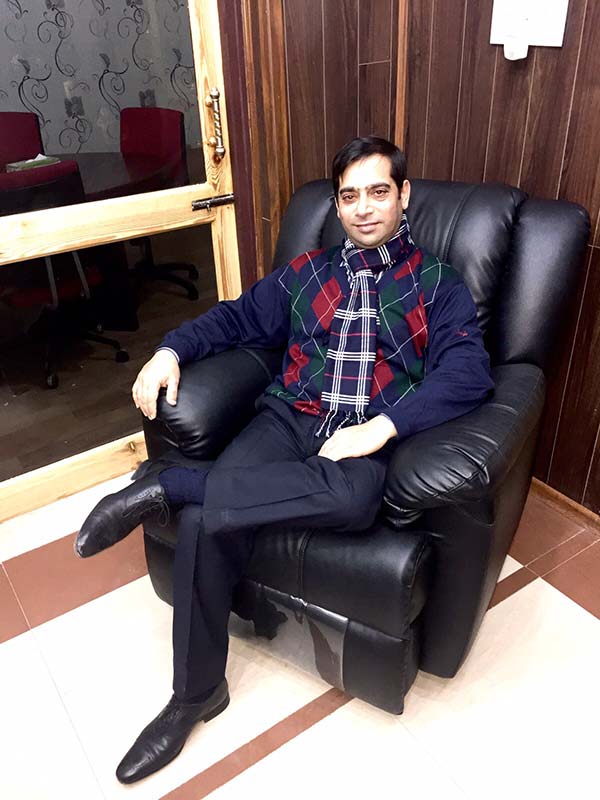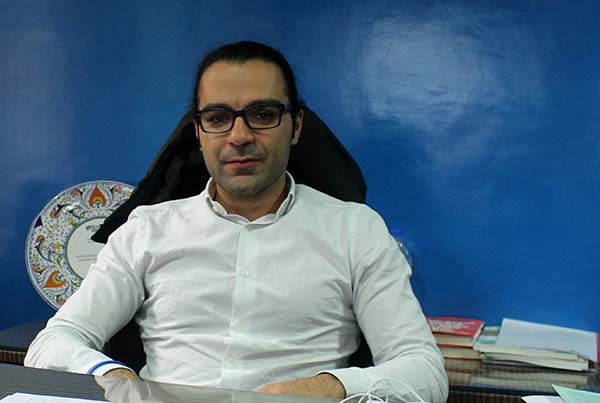Investors are always on lookout for possibilities in a market. But in flood-devastated Kashmir that saw lot of investment across the sectors, three entrepreneurs jumped into areas which are challenging and apparently difficult. R S Gull reintroduces the distinct trio who made 2015 different

In September 2014, when the Jhelum breached its banks and converted Srinagar city into an ocean, Kashmir’s economic hubs took the major hit. As the gigantic ONGC pumps started draining the city and failed to make a big difference, the naysayers said the beggary of Kashmir has actually started. Nobody will be in a position to invest now because Kashmir has lost its purchasing capacity.
But time has always been the best healer. As roads were restored and the flood-soaked buildings dusted to resume the routine, the ‘never say die’ spirit took over. In 2015 alone, Kashmir alone saw an investment of nearly Rs 300 crore across the sectors and there were a few whose forays were distinct and challenging. They could foresee a future in areas rarely considered worth an investment in Kashmir, a place far away from the main market in plains.
Shahid Kamili, for instance belonged to a family of civil servants who decided against taking a government job. An engineer by training, he was initially into steel fabrication. Then he jumped into bullet-proofing and shifted his base to Delhi. Then, one day, he started thinking about manufacturing construction steel in Srinagar, an area that was never looked at as a viable option for a varied set of reasons.
Steel manufacturing has remained essentially a Jammu domain. Almost 100 percent of the construction steel that Kashmir consumed would come from Bari Brahamna that would also consume the entire scrap that Kashmir produces. One of the major reasons for not manufacturing steel in Srinagar was non-availability of power. This situation had gradually pushed steel manufacturing into a sort of negative list. Then, Kamili appeared on the scene and put up a long battle and trigger a change.
In June 2009 when he was shown a ‘vast piece of land’ in Rangreth industrial estate, he was shocked because it was a 22 kanal marsh. Going against the advice of his well-wishers, he decided to go against the wind. For the next one year, he filled the marsh with 40,000 truckloads of soil. By June 2013, Kamili was the proud owner of Himalayan Rolling Steel Industries Private Limited, perhaps the most modern steel manufacturing facility in Kashmir. His testing lab, considered to be better than that of NIT in Srinagar, is accredited by National Accreditation Board for Testing and Calibration Laboratories (NABL).
“It has been a painful but a rewarding journey,” a confidant Kamli said. “It gave me the confidence that Kashmir has the capacity to change, think and execute.” Investing Rs 130 crore in four years, with lots of tensions around, Kamili has finally made it happen. “We have both our hands full of orders.”
Kamili’s facility is highly sophisticated and is equipped with advanced-technology which effectively enhances the production capacity and quality of the manufacture. The unit is fully automatic and controlled by computer-driven servers. “It is designed to facilitate twin mills. One produces structural steel while the other produces Thermo Mechanically Treated (TMT) steel. Both the operations take place simultaneously,” Kamili said.
The multiple product plant has the capacity to produce 400 tons per day but for the last two years it has been running on a capacity of 250 tons a day.
“It has to have its allied plant that produces channel beams which are required in the construction of bridges,” Kamli said. “I have invested substantial part (Rs 11 crore) but it still would require some more funds.” He suffered some losses in 2013 for want of inadequate working capital. But he did not felt the problem choke his operations. Right now, he has a daily sale turnover of around a crore of rupees.
Kamili has set his targets high. Instead of competing with local manufacturers in the state, Kamili sees major steel manufactures like TATA, Jindal and SAIL as his competitors. “We do not use scarp, instead we use bars that come from the reputed manufacturers,” Kamili said. “The beauty of the product is that while we manufacture the best, we still sell almost Rs 10,000 less than the biggies.”
Right now, Kamili manufacturers 8 mm to 36 mm with grade variability of Fe 415, 500, 500D, 500S, 600D and 600S. “For some reasons, we still are not running the facility to its full capacity,” Kamili said. “Once we did it, we hope to achieve breakeven in March 2017.” He is desperately working to invest some more funds to see his steel angle plant functional. “Seventy percent of it is already ready and it still needs some more money.”

Feroz Ahmad Mir is the scion of Hasan Road Construction Company (HRCC) Pvt Ltd, a name that has taken nearly four decade to emerge on the construction scene of Kashmir. What makes Mir distinct in the new investors in Kashmir is not that the HRCC is diversifying, but the fact that it has entered an area where biggies dominate the scene – the cement manufacturing.
Currently busy in the trail runs of its HK Cements, Mir has already invested nearly Rs 35 crore in the Japanese technology plant and hopes the cost and time overruns may eventually alter the overall investment for the plant. Unlike his peers who have had heavier management and commerce degrees with them when they took over their businesses, Mir graduated from Amar Singh College and was baptized into business by his uncle. “Since then, there was no looking back,” Feroz said. “I implemented a series of construction projects since 2006 and eventually conceived and implemented the cement plant projects, all alone.”
HRCC is an interesting growth story, never looked at, and rarely profiled. It started with a stone crusher in the city outskirts in late eighties by Haji Ghulam Hassan Mir. By the time his four sons joined the business, the family owned one of the premier hot mixing plants in Kashmir. Year 1999 was a game-changing year when HRCC was enlisted as class-S contractor for the Military Engineering Service (MES). This gave the company to explore hitherto untouched area, mostly building huge IAF infrastructure in the state.
Feroz said their company invested massively in upgrading the construction infrastructure throughout. “It is a complete fleet now,” he said. “We have concrete batching plants, transit mixers, concrete pumps and pavers, motor graders, pneumatic rollers and vibratory rollers.”
With enough of experience in managing high quality projects, HRCC then did a series of projects for the ERA which included Wanpoh-Kulgam Ahrabal Road, Kokernag-Semthan Top Road, Rawalpora-Tenpora drainage project and is currently implementing Rs 107 crore Chanpora-Rawalpora draining system. Besides, they are repairing the canal system in Jammu which is also a major project. “We now have the capacity to implement any major project in the state or anywhere,” a confident Feroz said. “We invested in the cement plant simply because it falls within our area of specialty and we will always stay around our roots.”
By now, HRCC has taken the dealership of Nissan, a major automobile manufacturer. “On our wish list is a hospital and an engineering college,” Feroz says.

The other investor who falls in the distinctly different list is Khurram Mir, who has been in news off and on for the last many years, after flying home with an American degree. He is keen to stay around his specialty, the horticulture. After mentoring a series of CAS stores under his post-harvest ideas, Mir, this year jumped into the pre-harvest. The in-thing now is the high density and all credits to Mir.
His foray into the high density has been a low investment with phenomenal consequences. “We set up a demonstration orchard which is on 42 kanals of land and we already had one harvest of 8000 trees,” Mir said from Lassipora, where his CAS is located. The orchard cost him around Rs 2 crore. Once the market acknowledged the change and possibilities – even Chief Minister Mufti Sayeed visited his orchard and showered praises on his vision, Mir invested in nursery propagation. “We invested Rs 3.5 crore in nursery propagation and this year we have already taken orders for planting 60,000 high density saplings which is the maximum we can do in a year.”
Mir’s efforts are making an impact. Growers, who have been very conservative in keeping the routine orchards unchanged, have started feeling the need to jump to the next level, a level that can improve their yield ten times. “We already have testimonies to prove that even on the Srinagar-Shopian highway, you can see a half a century orchards axed completely,” Khurram said. “People have acknowledged the inevitability of change.” Target for 2016 is two lakh plants.















